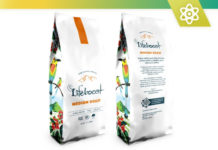Creating a workout routine that aligns with your fitness goals can be a transformative journey. Whether you aim to lose weight, build muscle, enhance cardiovascular health, or simply boost overall fitness, having a structured plan is crucial. Crafting the right workout routine involves understanding your goals, incorporating essential components of fitness, and maintaining consistency. This article will guide you through the entire process, ensuring you have the tools and knowledge to succeed.
Understanding Your Fitness Goals
Before embarking on any fitness journey, it’s essential to define your goals. Are you aiming to lose weight, gain muscle, improve endurance, or simply stay active? Clearly outlining your objectives using the SMART criteria—Specific, Measurable, Attainable, Relevant, and Timely—will help shape your workout plan.
For instance, if your goal is to gain muscle, you might specify, “I want to gain 5 pounds of muscle in three months.” This goal is measurable and attainable, providing a clear target to work toward. On the other hand, if you aim to lose weight, setting a goal like, “I want to lose 10 pounds in two months,” will help keep you motivated and focused.
Tracking your progress is equally important. Keeping a workout journal or using fitness apps to record your sets, reps, and weights can help you monitor improvements and adjust your routine as needed. This way, you can ensure you’re on the right track and make necessary adjustments if progress stalls.
Designing Your Workout Routine
An effective workout routine combines strength training, cardiovascular exercises, and flexibility work. Balancing these elements will help you achieve a well-rounded fitness level.
Strength Training
Strength training is essential for building muscle, increasing metabolism, and enhancing overall strength. It involves exercises that make your muscles work against a force, such as lifting weights or using resistance bands. Key components of a strength training routine include:
- Compound Movements: Exercises like squats, deadlifts, bench presses, and pull-ups that engage multiple muscle groups.
- Isolation Movements: Exercises like bicep curls and tricep extensions that target specific muscles.
- Progressive Overload: Gradually increasing the weight, frequency, or number of repetitions in your strength training routine to continually challenge your muscles.
A typical strength training session might last 45 minutes to an hour, including a warm-up and cool-down. Starting with compound movements ensures you engage the larger muscle groups when you’re most fresh, maximizing strength gains.
Cardiovascular Training
Cardio exercises are vital for heart health, burning calories, and improving endurance. Incorporating activities like running, cycling, swimming, or high-intensity interval training (HIIT) into your routine can enhance cardiovascular fitness. Aim for at least 150 minutes of moderate-intensity cardio or 75 minutes of high-intensity cardio per week, as recommended by health guidelines.
Flexibility and Mobility
Flexibility and mobility exercises, such as yoga and stretching, improve your range of motion, reduce the risk of injuries, and enhance overall performance. Incorporating these exercises into your routine a few times a week can significantly benefit your fitness journey.
Structuring Your Weekly Routine
A well-structured workout routine balances different types of training across the week. Here’s a sample weekly plan that incorporates strength training, cardio, and flexibility work:
- Monday: Full-body strength training
- Tuesday: Cardio (running, cycling, or HIIT)
- Wednesday: Rest or light yoga/stretching
- Thursday: Upper body strength training
- Friday: Cardio
- Saturday: Lower body strength training
- Sunday: Rest or flexibility work
This structure ensures you target different muscle groups, allow for adequate recovery, and keep your workouts varied and interesting.
Effective Workout Techniques
Supersets and Circuit Training
For those short on time, supersets and circuit training offer efficient ways to maximize workout effectiveness.
- Supersets: Pairing two exercises that target opposing muscle groups, performing them back-to-back with minimal rest, can save time and increase workout intensity. For example, pairing a bicep curl with a tricep extension keeps both muscle groups engaged without long rest periods.
- Circuit Training: This involves performing a series of exercises in a sequence with little to no rest in between. It combines strength training and cardio, making it an effective way to burn calories and build endurance in a short period.
Progressive Overload
Progressive overload is key to continuous improvement in strength training. By gradually increasing the demands placed on your muscles, you stimulate growth and improve strength. This can be achieved by:
- Increasing Weight: Gradually add more weight to your lifts.
- Increasing Reps: Perform more repetitions with the same weight.
- Increasing Sets: Add more sets to your routine.
Monitoring your progress and consistently challenging yourself ensures that your muscles adapt and grow over time.
Nutrition and Recovery
Nutrition
Proper nutrition is crucial for achieving fitness goals. For muscle gain, ensure you’re consuming enough protein to support muscle repair and growth. Lean meats, dairy, and plant-based protein sources are excellent options. For weight loss, focus on a balanced diet rich in vegetables, fruits, lean proteins, and whole grains, while maintaining a calorie deficit.
Recovery
Recovery is just as important as the workout itself. Muscles need time to repair and grow, which means incorporating rest days into your routine is essential. Activities like stretching, foam rolling, and even light yoga can aid recovery.
Adjusting Your Routine
As you progress, you might find that your initial routine needs adjustments. This could be due to plateaus in progress, changes in goals, or simply needing a new challenge. Periodically reassess your routine and make changes as necessary. This might involve shifting focus to different muscle groups, increasing exercise intensity, or incorporating new activities.
Staying Motivated
Staying motivated can be challenging, especially over long periods. Here are some tips to keep you going:
- Set Short-term Goals: While long-term goals are important, setting short-term milestones can provide immediate motivation.
- Work with a Trainer: A personal trainer can provide guidance, accountability, and fresh workout ideas.
- Join a Community: Engaging with a fitness community, whether online or in person, can offer support and camaraderie.
- Track Your Progress: Seeing your progress over time can be incredibly motivating. Record your workouts, track your measurements, and celebrate your achievements.
Conclusion
Building an effective workout routine tailored to your goals requires careful planning, commitment, and adaptability. By understanding your objectives, incorporating various types of training, and maintaining a balanced approach, you can create a successful fitness journey. Remember, consistency is key, and with time and effort, you’ll achieve your fitness aspirations.
For more detailed guidance, you might find these resources helpful:
- Mayo Clinic on Weight Training
- Nerd Fitness on Building a Workout Routine
- Verywell Fit on Strength Training













![Bowflex Max Total: 2024 Fitness Workout Exercise Machine [Review] Bowflex Max Total: 2020 Equipment Review For Complete Upper and Lower Body Workout](https://www.advancedliving.com/wp-content/uploads/2019/12/Bowflex-Max-Total-218x150.jpg)


